What To Eat When Nauseous: 7 Soothing Foods To Try
Diet tips and hacks to help ease discomfort and provide relief when feeling pukish

Image: Shutterstock
Have you ever wondered what foods to eat while you feel nauseous? And, how to beat that uneasy and unpleasant feeling? The truth is, nausea is merely a symptom. This means, if you are feeling nauseous, it is a sign of an underlying health problem.

From time to time, adults experience nausea. It can be due to allergies, pregnancy, irregular diet, food intolerancei The digestive problems (like nausea, bloating, etc.) that occur after the intake of certain foods. , certain medications, gut diseases, surgery, cancer treatments, and hormone disordersi Diseases that affect the organs that secrete hormones needed for proper body functioning. .
A study was undertaken to understand the digestive complications faced by Covid-19 patients, and a total of 1992 patients met the criteria. 53% of patients experienced at least one gastrointestinal symptom at any time during their illness, like diarrhea (34%), nausea (27%), vomiting (16%), and abdominal pain (11%). So there might be many other diseases that can cause nausea, not just a select few.
Eating food while feeling nauseous is a daunting task. However, selecting appropriate foods can effectively mitigate discomfort. Staying hydrated and balancing your body’s electrolytesi are crucial for reducing nausea.
There are also certain foods that help reduce nausea. This post lists out foods you can eat and one you must avoid while feeling nauseous. Scroll down to know what to eat when nauseous!
In This Article
What Are The Foods To Eat While You Feel Nauseous?
Here is a list of foods to eat when nauseous. Read through to know better!
1. Apples
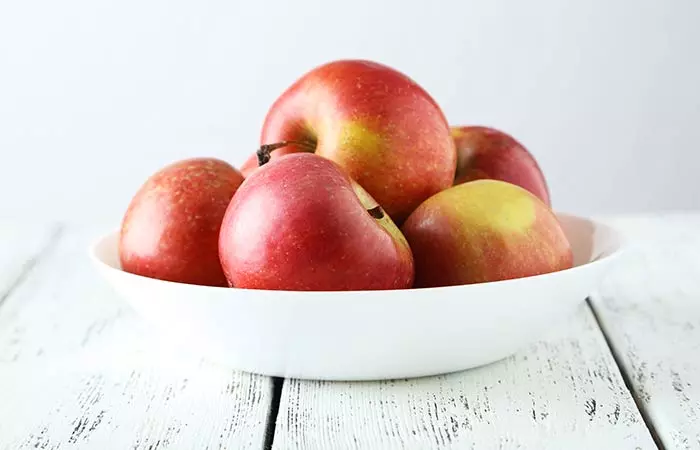
Apples are high in fiber and help rid your body of toxins faster. They also aid digestion (1). This way, they can accelerate intestinal transit and help relieve nausea.
You can either have an apple or make applesauce and have it with toast.
2. Ginger
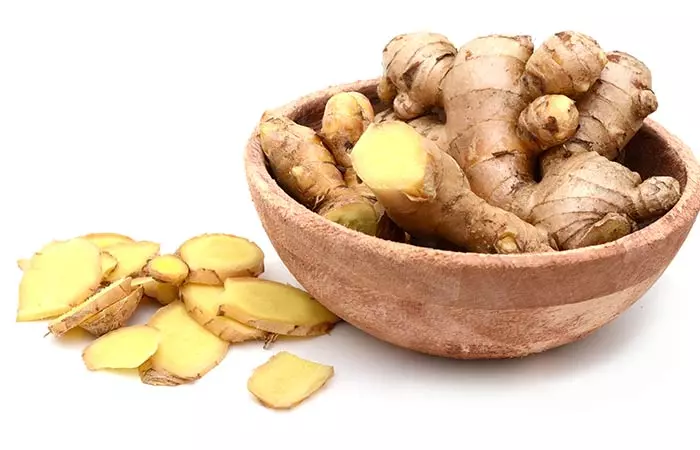
Gingerol and shogaol, two major components in ginger, have been shown to relieve nausea in chemotherapyi Most typical treatment for cancer involving the use of powerful chemicals that target rapidly multiplying cells. patients (2).
Ginger also helps relieve morning sickness commonly associated with pregnancy(3). It is one of the effective home remedies for nausea during pregnancy.
You can chew on a ginger root or boil it with water and consume it.
Note: Ensure you avoid excess ginger during summers as it may lead to a burning sensation.
3. Coconut Water
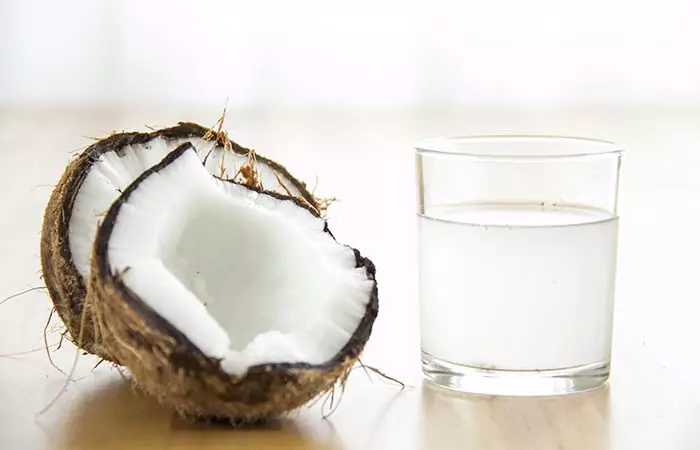
Coconut water plays an important role in helping with nausea (4). It can help treat morning sickness in pregnant women and dehydration-associated nausea in infants and children.
A tablespoon of lime juice with a glass of coconut water can help relieve nausea. While the coconut water has electrolytes, the lime juice can enhance the taste.
Kelsey Selens, a vlogger, shares in one of her vlogs her personal experience of managing nausea during her first trimester of pregnancy. She discusses the importance of drinking lemon water to alleviate nausea and morning sickness. Emphasizing the importance of proper hydration, she states, “I definitely noticed that my nausea would be way less if I was super hydrated (i).”
4. Broths
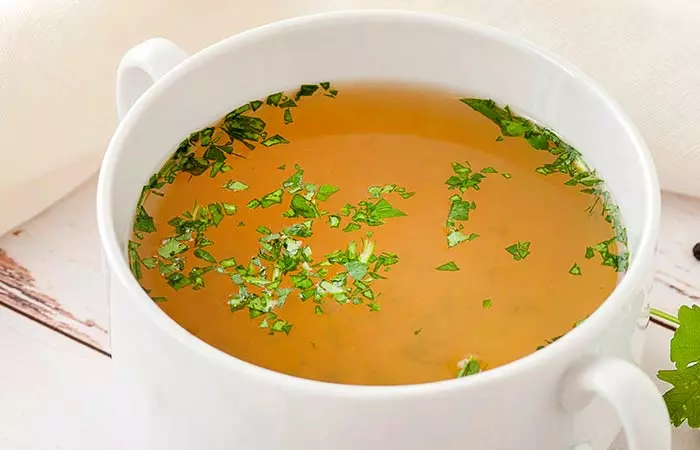
Don’t we love having soups when we are sick? Well, there’s a reason behind it. The hot broth helps clear nausea caused by headaches and congestion (5). When you are transitioning from liquid food to solid food during sickness, broth can be a good option.
5. Bananas

Nausea can make eating difficult. Hence, it is important to consume nutrient-dense foods. Well! Do bananas help with nausea? Yes, they do! Bananas serve as a power-packed meal during these times. They are energy-dense, and they also stimulate the production of mucusi Gel-like substance lining the surface of the stomach that protects the stomach lining and assists in the movement of food. in the stomach lining (6). This helps relieve gastric disturbances, including nausea.
6. Herbal Teas

Herbal teas, like that of peppermint and chamomile, have shown to relieve nausea in women who had undergone a C-sectioni A surgical process to successfully deliver babies with surgical cuts made in the abdomen and uterus. (7).
Though there is no scientific evidence to back this up, many people with nausea have found herbal teas to be useful in relieving the symptoms.
7. Licorice Root

Licorice root is an effective remedy to treat several stomach-related issues. In a study, intake of GutGard, a product made from the extract of licorice root, was found to help treat indigestion (8). While more direct research on licorice is warranted, it could be safe to assume that the root may help improve acid reflux, nausea, and vomiting associated with indigestion.
You may brew loose licorice herbs in hot water to make tea and drink it at least once a day. You can also mix liquid licorice extract in beverages of your choice or take licorice capsules or chewable tablets.
 Did You Know?
Did You Know?These are the foods that can help with nausea. But steering clear of the wrong foods is as important as consuming the right ones. In the following section, we have listed the foods you should avoid as they may aggravate your nausea.
Key Takeaways
- Pregnancy, certain medications, inadequate nutrition or hormone disorders may trigger nausea in some.
- You should consume apples and bananas or drink tender coconut water to help relieve nausea.
- Consuming citric fruits, milk, or spicy food can make your stomach feel fuller and aggravate the condition.
- Consuming water throughout the day and eating something healthy every 2 hours are some of the best ways to prevent nausea in the long run.
What Foods Should You Avoid?
1. Acidic Fruits

Consuming acidic fruits upsets the stomach more. Hence, opting for non-acidic fruits (like bananas is a better option.
2. Oily Foods
Ulcers and gastrointestinal diseases can be very discomforting to your digestive system. These foods promote gas and lead to poor digestion.
3. Milk (Dairy Products)

Dairy products, including milk, may aggravate nausea and vomiting (8).
4. Refined Sugar
Foods rich in refined sugar are not easily digestible. They can lead to heartburni Burning sensation experienced in the chest and throat when the stomach acid rises up the food pipe (esophagus). and, eventually, nausea (10).
5. Soda

Soda or other carbonated drinks can cause heartburn and indigestion (11). These are also high in sugar and can upset your stomach.
6. Spicy Food
Spicy food can irritate your stomach and aggravate symptoms of gastritisi Inflammation in the lining of the stomach caused due to injuries, infection, or excessive consumption of alcohol. (12). This may lead to nausea.
7. Alcohol

Alcohol is a diuretic that causes your system to lose water, which can lead to dehydration (13). This can eventually cause nausea.
These foods/beverages can possibly aggravate nausea. Hence, we suggest you steer clear of them. In addition, there are other ways you can keep nausea at bay.
 Quick Tip
Quick TipTips To Control Nausea
Here are a few tips and remedies that you can follow to prevent or treat nausea:
- Ensure you eat something healthy every 1 to 2 hours.
- Eat and drink slowly as it will help you relax while enjoying your meal. Also, avoid consuming solids and liquids at the same time. Remember, your stomach is already upset, so keep your pace slow.
- Avoid lying flat on your stomach right after eating as it can create pressure on your abdomen.
- Food preparation and certain odors may also trigger nausea. So, be careful with your preparations.
- Keep rinsing your mouth after you eat anything. The unpleasant smell that lingers in your mouth may also cause nausea.
- Avoid being around the kitchen or any cooking area where the different aromas of food while cooking may aggravate the symptom.
While these tips can help manage nausea, certain symptoms may indicate a more serious issue requiring medical evaluation. Scroll down to learn more.
When To Seek Medical Help
Most of the time, nausea goes away on its own, but if it persists for more than 48 hours or is accompanied by severe symptoms, you need a doctor’s appointment. Dehydration, severe abdominal discomfort, blood in your vomit, severe headaches, chest pain, dizziness, or unexplained weight loss should all be treated by a doctor. See a medical professional for a proper examination if your nausea is regular, persistent, or interferes with your day-to-day activities.
Infographic: Foods To Eat And Avoid To Manage Nausea
It might be challenging to eat while you’re feeling nauseous. However, eating can keep your body healthy and strong. Choosing the right food and eating technique can reduce nausea and improve overall health. This infographic examines foods to eat and steer clear of when dealing with nausea. Take a look!
Some thing wrong with infographic shortcode. please verify shortcode syntax
Nausea signifies an underlying health problem. It can be due to allergies, food intolerance, pregnancy, gut diseases, certain medications, surgery, hormone disorders, and cancer treatments. Nausea can also be triggered by food preparation and certain odors. So, to avoid nausea, it is crucial to stay hydrated and keep your electrolytes in check. Some best foods for nausea include ginger, coconut water, herbal teas, and bananas, and more. One has to eat in little portions at regular intervals. Eating light and staying hydrated is a must to fight nausea. It will help alleviate nausea and keep it from returning.
Frequently Asked Questions
Should I make myself vomit if nauseous?
You can vomit naturally if you get the urge, but you should not force it.
How long does nausea usually last?
In most cases, acute nausea may last between a few days and a month. Beyond that, it could be a case of chronic nausea.
Is orange juice good for nausea?
Acidic and citric fruits like oranges might aggravate nausea and aren’t recommended.
Is peanut butter good for nausea?
A lack of protein may worsen nausea. Having protein-rich food like peanut butter can help get some relief from nausea.
Illustration: What To Eat When Nauseous - Foods To Eat And Avoid
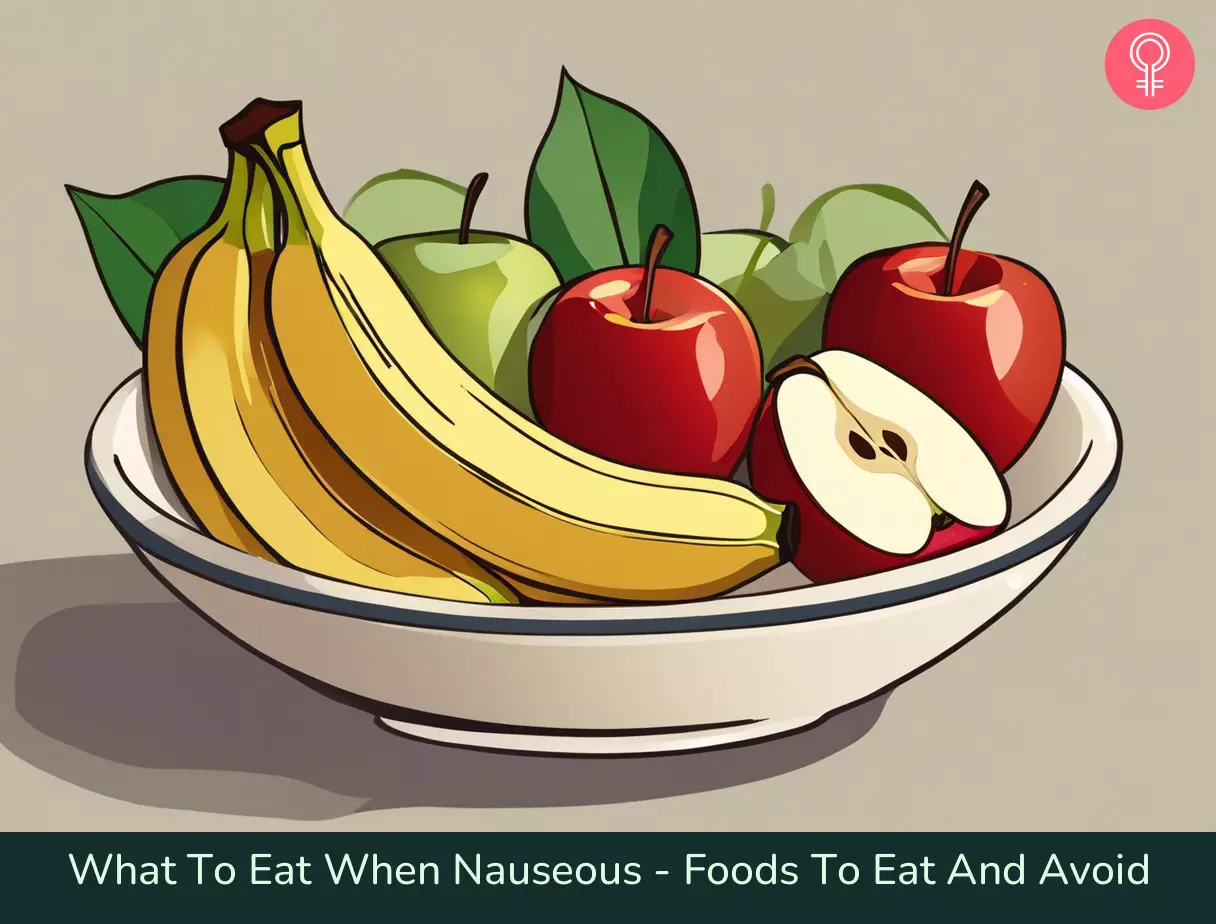
Image: Stable Diffusion/StyleCraze Design Team
Feeling nauseous can make you uncomfortable and put you in awkward situations. Watch this video to learn about the best foods that can help treat nausea.
Personal Experience: Source
StyleCraze's articles are interwoven with authentic personal narratives that provide depth and resonance to our content. Below are the sources of the personal accounts referenced in this article.
i. How to Get Rid of Pregnancy Nausea! TOP 5 TIPS!,
https://www.youtube.com/watch?v=8nqjxjQw7yk
References
Articles on StyleCraze are backed by verified information from peer-reviewed and academic research papers, reputed organizations, research institutions, and medical associations to ensure accuracy and relevance. Read our editorial policy to learn more.
- “Here are 10 fun facts about apples” Government of Connecticut.
- “Ginger-Mechanism of action in chemotherapy-induced nausea and vomiting: A review” Critical Reviews in Food Science and Nutrition, US National Library of Medicine, National Institutes of Health.
- “How Safe Is Ginger Rhizome for Decreasing Nausea and Vomiting in Women during Early Pregnancy?” Foods, US National Library of Medicine, National Institutes of Health.
- “Rehydration after exercise with fresh young coconut water, carbohydrate-electrolyte beverage and plain water” Journal of Physiological Anthropology and Applied Human Science, US National Library of Medicine, National Institutes of Health.
- “Effects of drinking hot water, cold water, and chicken soup on nasal mucus velocity and nasal airflow resistance” Chest, US National Library of Medicine, National Institutes of Health.
- “Bananas and nausea” MedlinePlus, US National Library of Medicine, National Institutes of Health.
- “Examination of the effectiveness of peppermint aromatherapy on nausea in women post C-section” Journal of Holistic Nursing, US National Library of Medicine, National Institutes of Health.
- ““An Extract of Glycyrrhiza glabra (GutGard) Alleviates Symptoms of Functional Dyspepsia: A Randomized, Double-Blind, Placebo-Controlled Study”” Evidence-based complementary and alternative medicine, US National Library of Medicine, National Institutes of Health.
- Vomiting and gastric motility in infants with cow’s milk allergy, National Institutes of Health.
- “Introduction: What to Eat When You Can’t Eat” Global Advances in Health and Medicine, US National Library of Medicine, National Institutes of Health.
- “Relief from common problems of pregnancy” Missouri Department of Health & Senior Services.
- “Gut feelings about gastritis” National Institutes of Health.
- “Hangovers” Stanford Office of Alcohol Policy and Education.
Read full bio of Madhu Sharma
Read full bio of Amita Mishra
Read full bio of Arshiya Syeda
Read full bio of Payal Karnik









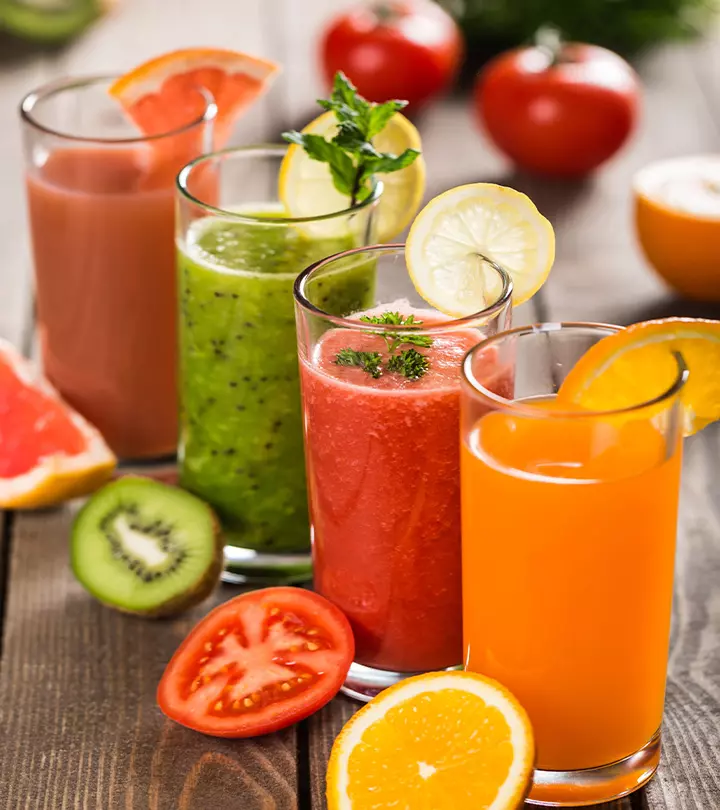



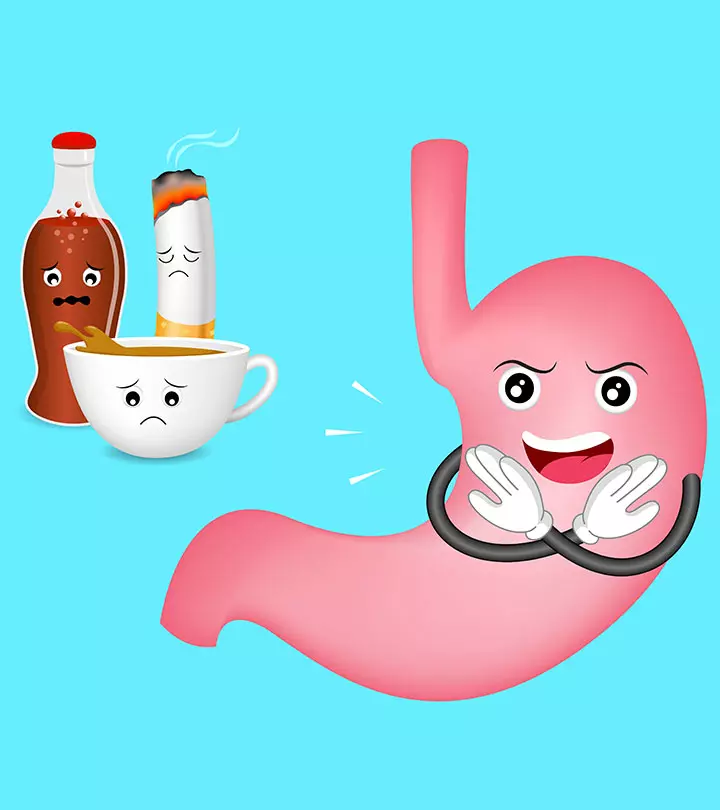



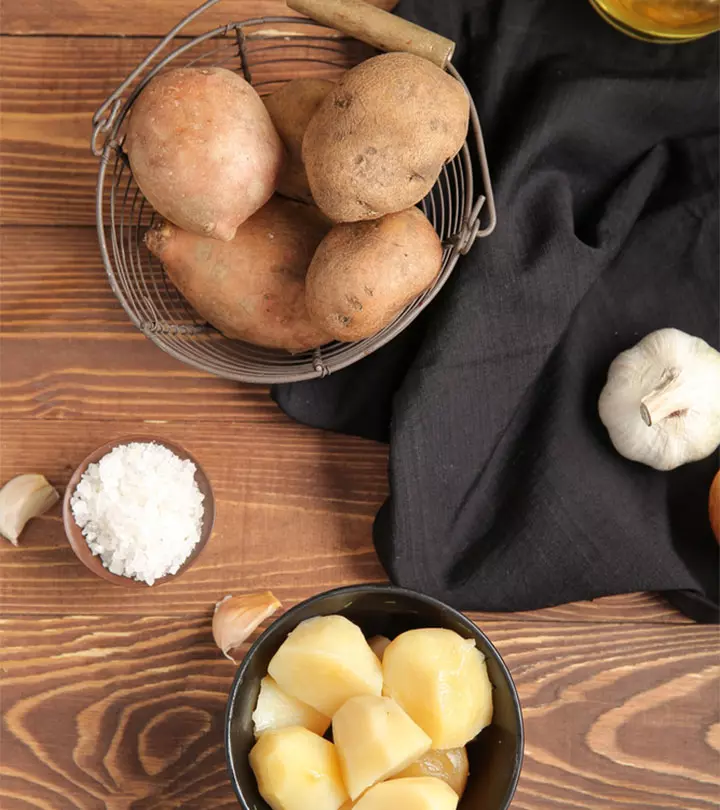

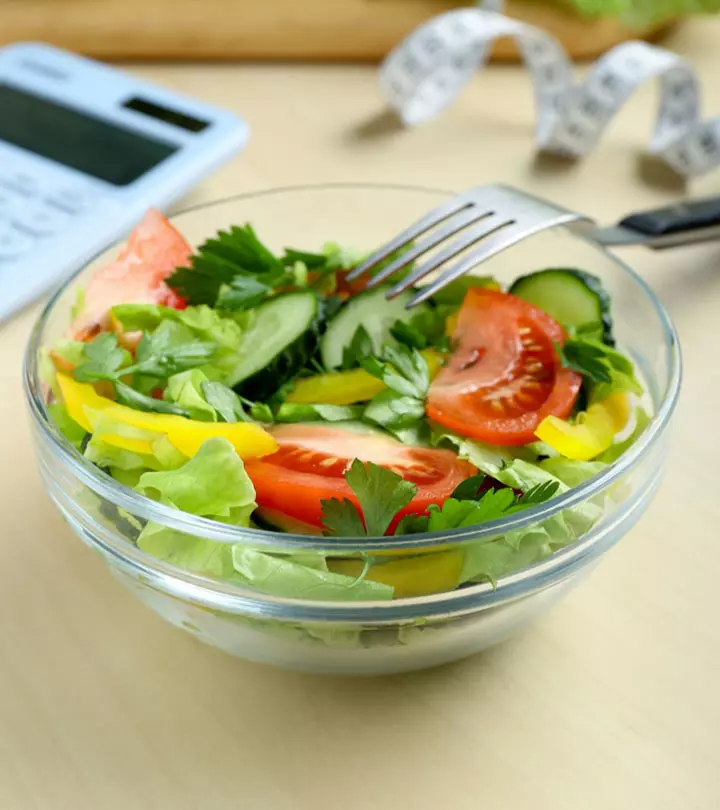




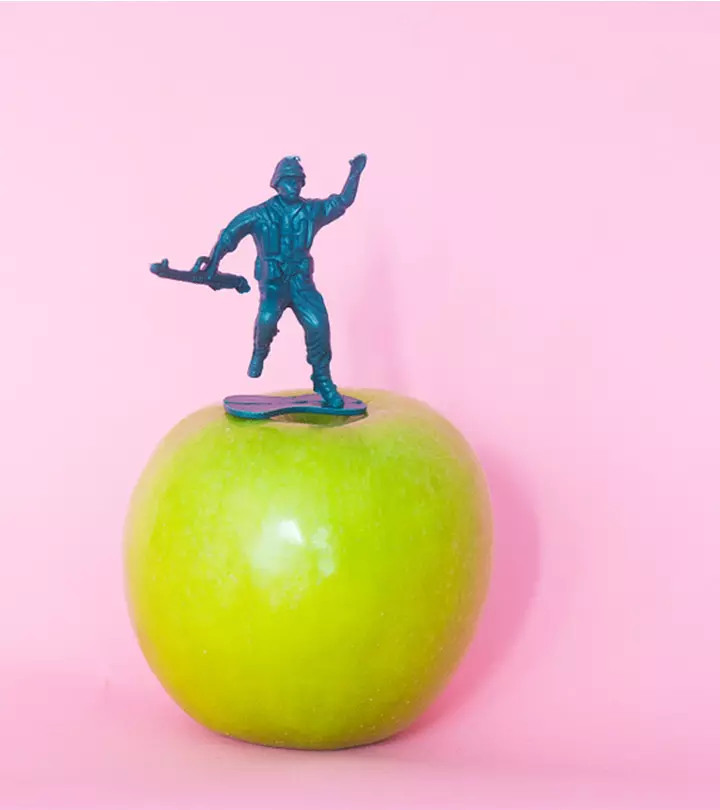


Community Experiences
Join the conversation and become a part of our empowering community! Share your stories, experiences, and insights to connect with other beauty, lifestyle, and health enthusiasts.